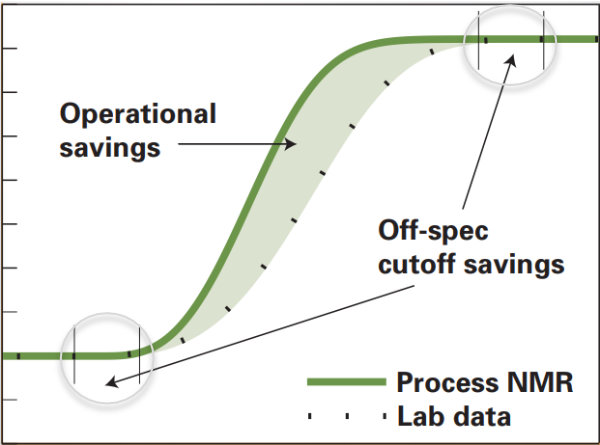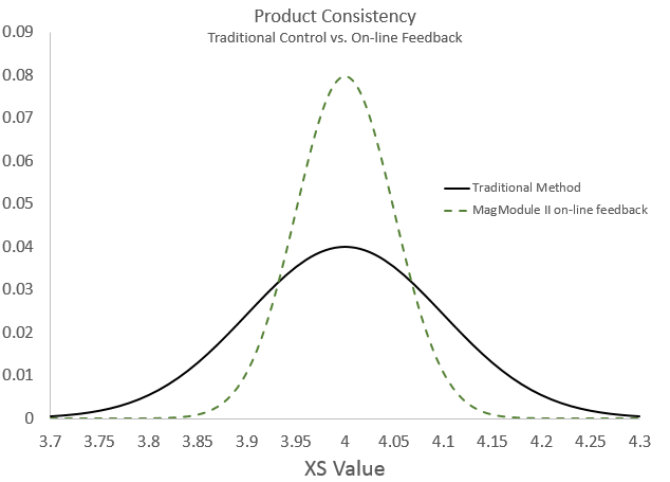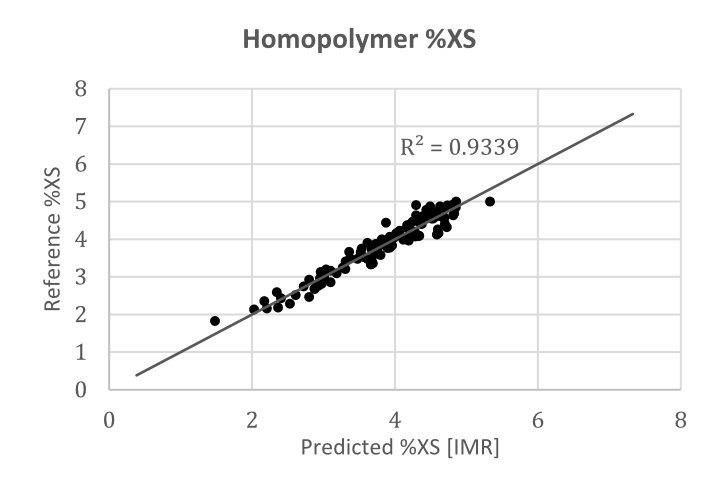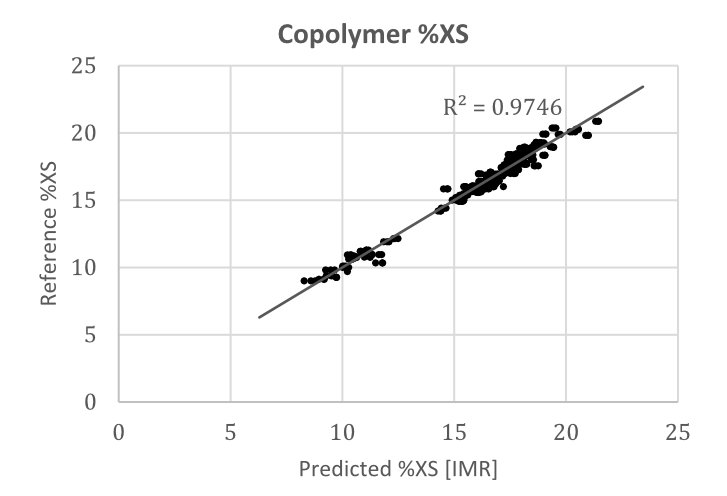SUMMARY
The global polyolefin industry synthesizes materials which have, over the years, replaced many traditional materials such as wood, steel, and ceramics. Polyolefin plants are adapting with more advanced technology to improve efficiency, reduce transition time, and tailor products to meet the ever-increasing demand on mechanical requirements. A key engineering parameter in the production of polypropylene (PP) is tacticity. Xylene solubles content (%XS) is a measurement of the atactic portion of polypropylene. Rapid monitoring of the solubles content has been shown to increase on-spec yield and reduce transition times. Analysis has traditionally been performed via solvent extraction (ASTM D5492; ISO 16152). These methods are time-consuming, expensive, prone to errors, operator dependent, and pose environmental and safety hazards due to the need for toxic solvents at high temperatures.
Magneflow® Industrial Magnetic Resonance (IMR) analyzers from LexMar Global Inc. provide faster, more robust, and safer solutions for the measurement of xylene solubles content.
LexMar Global Inc. is the world’s leading supplier for IMR technology to the polyolefin industry. The company provides robust laboratory instrumentation (MagStation™ II) and is the only manufacturer of fully automated online process equipment (MagModule™ II) used by the world’s most efficient polyolefin resin producers.
TECHNOLOGY OVERVIEW
The Magneflow® product line utilizes Industrial Magnetic Resonance techniques in the analysis of polypropylene materials. In IMR, a sample is positioned in a strong magnetic field. The nuclei within the sample begin to orient into multiple population states due to the presence of this external magnetic field. This orientation yields a small net magnetic moment in the sample. A short radio frequency pulse is applied to the sample which rotates this magnetic moment. As the magnetic moment returns to equilibrium after the pulse, the sample emits a Free Induction Decay (FID) signal. This FID signal contains information about the morphology of the material. If multiple morphological domains exist within a single sample, the FID can be modeled as the sum of multiple smaller components. For polypropylene, this approach allows for direct measurement of atactic, tactic and interfacial domains within a given sample.
PROCESS OPTIMIZATION
Polypropylene producers have successfully utilized real-time feedback from the MagModule™ II online analyzer to continually monitor %XS results during product transitions. This feedback allows for responsive adjustment of process conditions which minimizes transition times and virtually eliminates target overshoot.

These same producers also continuously monitor %XS results post transition. This allows plant controllers to utilize closed-loop feedback to optimize reactions and maximize product consistency.

CALIBRATION AND RESULTS
The laboratory or online Magneflow® IMR analyzer is calibrated against traditional wet chemistry analysis. It is the customer’s choice whether the calibration is performed by LexMar Global Inc. or locally by the polypropylene plant staff. Linear calibrations are easy to generate with a limited number of reference samples as long as the entire product range is represented in the sample set. The calibration models, once established, are very robust, rarely requiring adjustment.
The following figures demonstrate typical calibration performance for the Magneflow® product line.


SAMPLING
Both reactor powders and extruded pellets can automatically or manually be sampled from the process for Magneflow® IMR analysis. For online IMR, powders are collected as close to the reactor as possible; depending on process conditions this happens typically minutes after polymerization. The samples (25 g) are then analyzed using the Magneflow® IMR instrument in approximately 10 minutes to provide an accurate %XS determination (compared to the several hours required for wet chemistry). No sample preparation is required and there is no need for solvents, weighing, or drying. Since the Magneflow® IMR technology measures 100% of the sample in the testing probe, the analysis is virtually unaffected by additives, color, product homogeneity, and other matrix effects.
BENEFITS & SERVICES
- Direct analysis of %XS for both homopolymers and copolymers
- Large sample volumes (25 mL) ensure proper sample representation for the most accurate results
- Non-destructive analysis
- No sample preparation necessary
- Simple, highly repeatable analysis
- Operator independent results
- Solvent-free analysis
- Pre-loaded methods and analysis routines
- Results are fully compatible with DCS and LIMS systems
- Customized solutions for hazardous and non-hazardous installations (MagModule™ II)
- Determination of best sample extraction location and subsequently fully automated 24/7 sampling (MagModule™ II)
FURTHER INFORMATION
In addition to the analysis of xylene solubles content in polypropylene, the MagModule™ II and MagStation™ II are each capable of measuring ethylene content (C2), flex modulus, and Charpy impact. They also provide trending information for melt flow index (MFI).
Other polyolefin application offerings include:
- Analysis of Polyethylene for density and melt flow
In addition to the MagStation™ II and MagModule™ II LexMar Global proudly offers also the following analytical equipment:
- MagStation™ Lite – Benchtop IMR
- Correflow™ 5430, Correstat™ 5410, Correflux™ 5420 – Electrostatic Reaction Monitoring